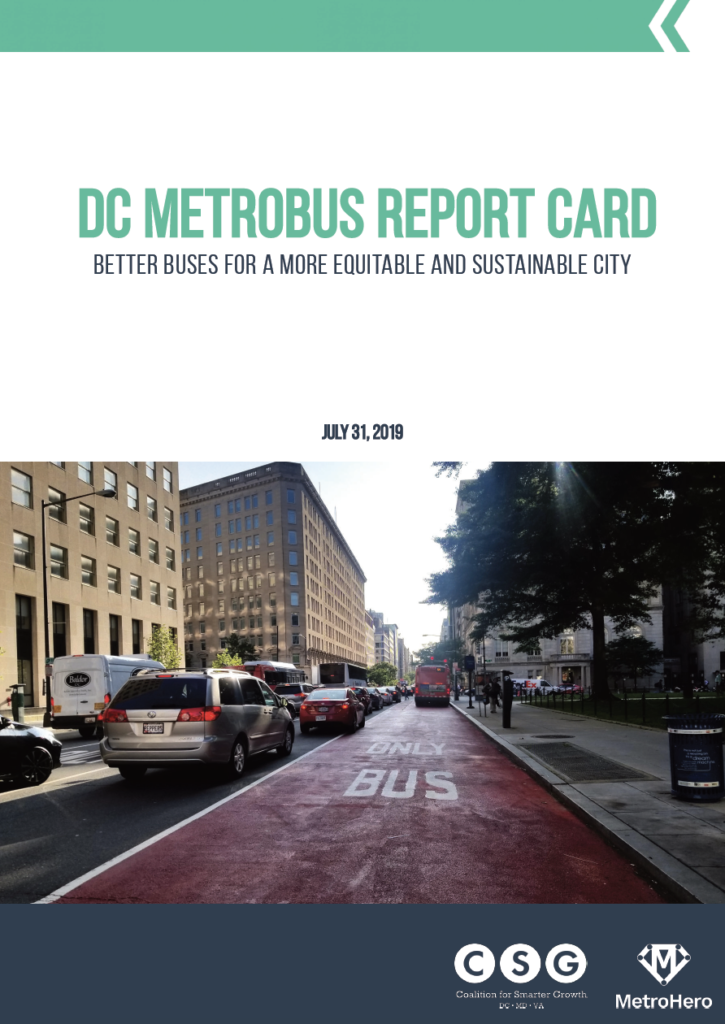A copy of the letter below was sent on Tuesday, October 15, 2019 to the Montgomery County Council and County Executive. The PDF can be found here.
Dear Council President Navarro and County Councilmembers:
We thank and commend Al Roshdieh, the departing Montgomery County Department of Transportation (MCDOT) Director, for his public service and the commitment he has shown to promoting sustainable, safe, multimodal transportation options. We wish him all the best in his future endeavors.
When considering an appointee for Mr. Roshdieh’s successor, we urge the Council to ensure that the next MCDOT director is a leader in implementing modern transit, green and complete streets that are safe for all users, and transit-oriented development. The next director must be committed to achieving the county’s Vision Zero and climate goals, reducing vehicle miles traveled, and making major shifts in mode share to transit, walking, and bicycling. We also believe the next director should pledge to be a frequent transit user.
Specifically, we ask that the next director be committed to the following priorities:
- Hold MCDOT accountable to the county’s Vision Zero initiative.
People want to safely bike and walk in Montgomery County. However, in 2019 alone, more than 300 people have been injured or killed due to inadequate pedestrian and bicycle infrastructure and the prioritization of cars on our roadways. This is up 14 percent since 2018, with 38 percent of crashes on county roads. Since the Vision Zero resolution was passed in 2017, at least 50 people have died.
MCDOT is the lead agency on many of the most critical pieces of the county’s Vision Zero initiative, and it is the responsibility of the director to hold the department accountable to those goals. This requires tough choices that will substantially cut traffic fatalities, such as remaking arterials and roads into streets that encourage walking and biking through road diets, including protected bicycle lanes, fewer and narrower vehicle lanes, tighter turn radii, pedestrian refuges, bumpouts and well-marked crosswalks and other infrastructure improvements.
Vision Zero implementation should be especially prioritized around schools, where children are at high risk of injury or death simply when trying to walk or bike to school. In addition, providing safe pedestrian and bicycle access to future Purple Line stations, and during construction, is essential. We also hope that the new MCDOT director will collaborate with the Planning Department to implement the Bicycle Master Plan and forthcoming Pedestrian Master Plan.
- Commit to implementing the county’s planned bus rapid transit (BRT) network in a timely manner.
The groundbreaking of BRT on Route 29 and funding for preliminary engineering of BRT on MD-355 and Veirs Mill Road are steps in the right direction. MCDOT must continue to prioritize the creation of a gold standard BRT network. We need a visionary BRT system that addresses the county’s economic development, social equity, and greenhouse gas emission reduction challenges.
When designing BRT, MCDOT must prioritize dedicated lanes; off-board fare collection; frequent, reliable service; and stations with real-time travel information. These standards are essential for generating high ridership, improving the commutes of all users, and creating a key economic asset. Phase 1 of the planned BRT network alone is projected to bring in over $871 million in net fiscal revenue over 25 years.
- Maintain and expand transit opportunities through RideOn and external collaboration.
Ride On has the second highest ridership of any suburban bus system in the country at over 22 million trips in 2017. MCDOT been innovative through programs like Ride On Extra, and can build upon those successes. We encourage the next director to support a redesign and upgrade of the combined Ride On and WMATA bus network to ensure service is frequent, reliable, equitable, and customer-focused. There may also be opportunities to better integrate with other transit services, like MetroRail, MARC, BRT, MetroBus, and TheBus.
The director will need to collaborate and coordinate with outside agencies to effectively expand transit opportunities, such as BRT routes and road diets on state roads and the construction of new Metro entrances. Transit opportunities will not grow without close collaboration with such agencies as the Maryland State Highway Administration, Maryland Transit Administration, and the Washington Metropolitan Area Transit Authority.
- Further the county’s goal to reduce greenhouse gas emissions by 100% by 2035.
MCDOT must work to meet the mobility needs of residents throughout the county with environmental sustainability in mind. Meeting the county’s climate change goals requires transportation projects and programs that promote sustainable transportation options. Moreover, MCDOT should not support highway expansion projects, such as Mid-County Highway Extended, which incentivize single-occupancy vehicle trips and damage the natural environment. Finally, the director should strive to move all MCDOT vehicles towards electrification and continue to increase electric vehicle infrastructure.
In conclusion, the next director should have as a key objective creating a transportation system that supports the environment and people. We recognize that for the future director to implement these priorities, MCDOT requires support from the operating and capital budgets passed by the County Council. Therefore, we also call on the County Council to prioritize funding for these crucial projects.
Thank you for your attention to this important matter.
Signed,
Jeffrey Weisner
President, Steering Committee
350 Montgomery County
Denisse Guitarra
MD Conservation Advocate
Audubon Naturalist Society
Julio Murillo
Government & Strategic Relations Specialist
CASA
Jane Lyons
Maryland Advocacy Manager
Coalition for Smarter Growth
Barbara Noveau
Executive Director
DoTheMostGood Montgomery County
Diane Hibino, Kathy McGuire
Co-Presidents
League of Women Voters of Montgomery County
Walter Weiss
Administrator
Montgomery County Faith Alliance for Climate Solutions
Michael DeLong
President
Montgomery County Young Democrats
Shruti Bhatnagar
Chair
Sierra Club, Montgomery County Group
Maurice Belanger
President
Takoma Park Mobilization
Johanna Wermers
Transportation Representative
The Climate Mobilization
Margaret Schoap
Organizer
Transit Alternatives to Mid-County Extended
Greg Billing
Executive Director
Washington Area Bicyclist Association
CC: County Executive Marc Elrich




 by Jordan Pascale,
by Jordan Pascale, 